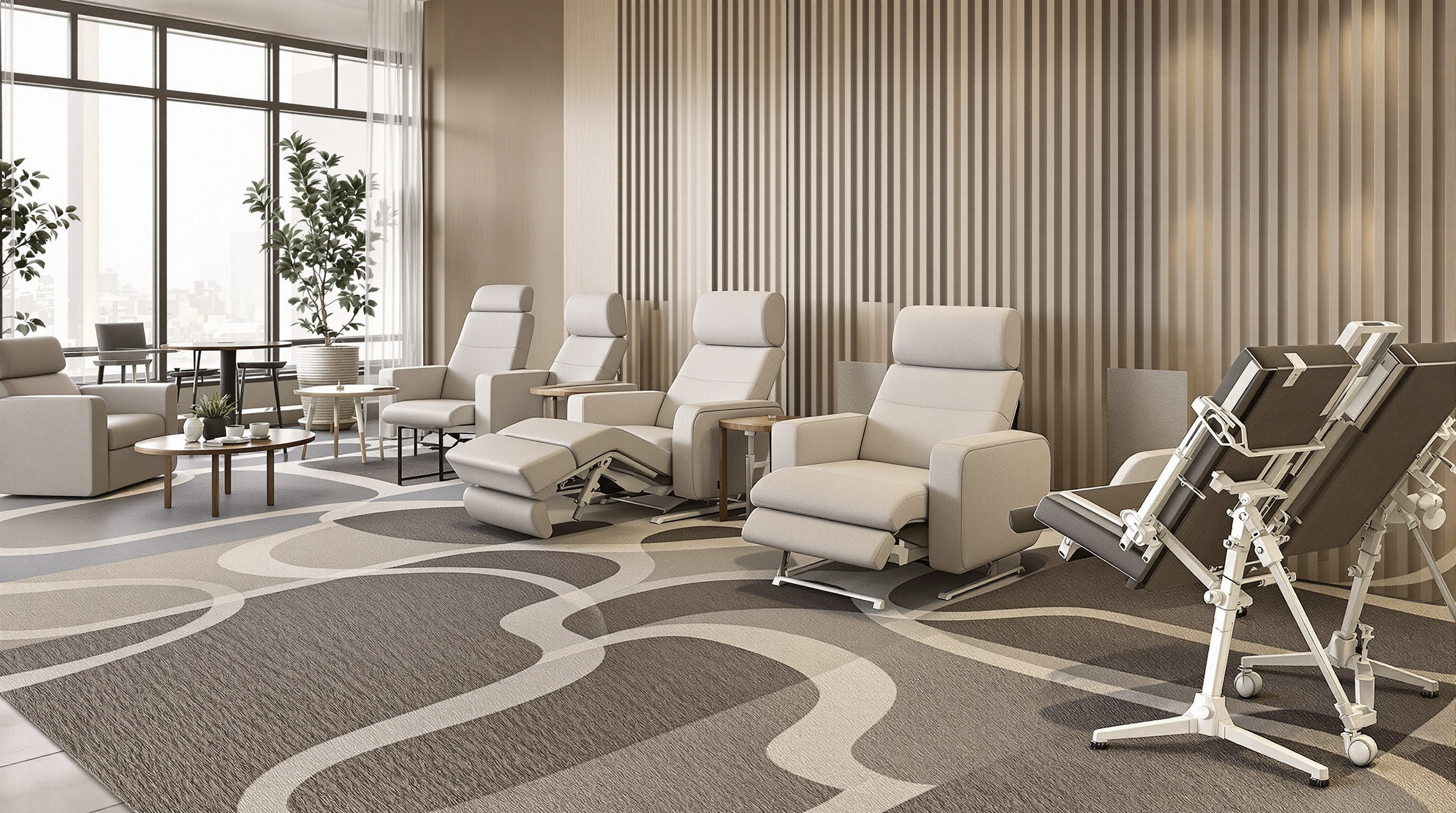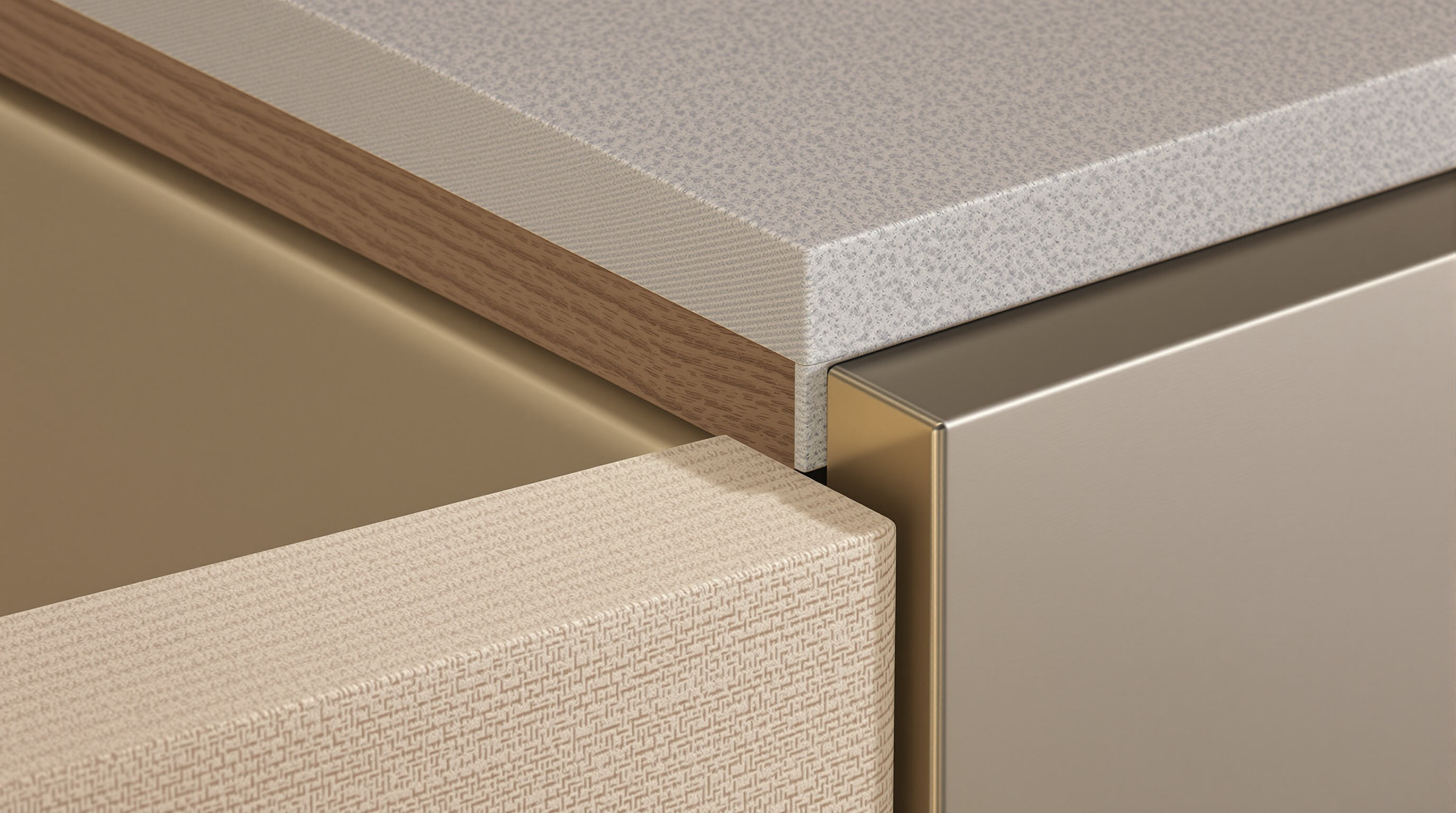ทันทีที่แขกเดินเข้ามาในโรงแรม พวกเขาจะเริ่มสร้างความคิดเห็นที่อาจติดอยู่กับพวกเขานานเท่านาน และเฟอร์นิเจอร์แบบสั่งทำพิเศษมีบทบาทสำคัญในการกำหนดความประทับใจแรกเริ่มเหล่านี้ ลองคิดดูว่า เมื่อมีคนเดินผ่านประตูด้านหน้าและมองเห็นสิ่งที่แตกต่างออกไป เช่น การจัดวางที่นั่งในล็อบบี้ที่ไม่เหมือนใคร หรือโต๊ะต้อนรับที่ดูเหมือนงานศิลปะมากกว่าเฟอร์นิเจอร์แบบใช้งานธรรมดา มันจะสร้างความรู้สึกประทับใจได้ทันที โรงแรมที่มีลักษณะเช่นนี้จะโดดเด่นกว่าสถานที่อื่นที่เพียงแค่เลือกใช้เฟอร์นิเจอร์ราคาถูกจากซูเปอร์สโตร์แบบไม่ได้เรื่อง ตามการวิจัยล่าสุดจาก Hospitality Design ในปี 2023 พบว่า นักเดินทางเกือบ 80% ให้ความสำคัญกับความสวยงามของที่พักก่อนทำการจองห้องพัก ดังนั้นการลงทุนในเฟอร์นิเจอร์ที่สะท้อนเอกลักษณ์เฉพาะตัว แทนที่จะเลือกเฟอร์นิเจอร์แบบผลิตเป็นจำนวนมาก ไม่ใช่เพียงแค่การออกแบบที่ดี แต่ยังเป็นกลยุทธ์ทางธุรกิจที่ชาญฉลาดอีกด้วย
เฟอร์นิเจอร์แบบสั่งทำพิเศษกลายเป็นการแสดงออกอย่างเป็นรูปธรรมถึงสิ่งที่แบรนด์ยึดมั่น ตัวอย่างเช่น รีสอร์ทริมชายหาดที่ใช้โต๊ะทำจากไม้ท่อนซุงที่หาได้ในท้องถิ่น หรือโรงแรมในเมืองที่เลือกใช้เฟอร์นิเจอร์แบบโมดูลาร์ที่ผสมผสานองค์ประกอบของเหล็กและคอนกรีตเข้าด้วยกัน การออกแบบเหล่านี้บอกเล่าเรื่องราวที่สร้างความประทับใจให้กับผู้มาเยือน ตามรายงานการวิจัยล่าสุดที่เผยแพร่โดย Luxury Travel Analytics ในปี 2024 ระบุว่า ที่พักที่ใช้การออกแบบตามธีมเฉพาะมีระดับความพึงพอใจของแขกที่มาพักเพิ่มขึ้นประมาณร้อยละ 22 เมื่อพื้นที่จริงสอดคล้องกับอัตลักษณ์ของแบรนด์ ก็จะสร้างประสบการณ์ที่พิเศษขึ้น และตัวเลขก็ยืนยันเรื่องนี้เช่นกัน โดยมีสัดส่วนเกือบเจ็ดในสิบของแขกที่มักจะกลับมาพักที่โรงแรมซึ่งมีองค์ประกอบทั้งการตกแต่งและการจัดวางพื้นที่ให้รู้สึกสอดคล้องและสมบูรณ์แบบตลอดการเข้าพัก
สีที่เราเลือกและการใช้วัสดุต่างๆ มีผลจริงๆ ต่อความรู้สึกของผู้คน พื้นที่พักผ่อนที่ใช้โทนสีอบอุ่นมักช่วยให้คนรู้สึกผ่อนคลายมากขึ้น ในขณะที่พื้นที่ส่วนกลางที่มีเนื้อผ้าที่มีลวดลายชัดเจน กลับกระตุ้นให้แขกเดินไปมาและพูดคุยกันมากขึ้น ตัวอย่างเช่น เก้าอี้กำมะหยี่ที่มีโทนสีเขียวอ่อน งานวิจัยเมื่อปีที่แล้วจากวารสาร Acoustic Materials Journal ระบุว่าสามารถลดเสียงรบกวนได้ดีกว่าผ้าหุ้มแบบสังเคราะห์ราคาถูกประมาณ 15% เมื่อนักออกแบบโรงแรมผสมผสานความสวยงามกับความสะดวกสบายในทางปฏิบัติ พวกเขาจะสร้างสภาพแวดล้อมที่กระตุ้นให้แขกรู้สึกดีโดยไม่แสดงออกอย่างชัดเจน การเข้าพักจึงกลายเป็นประสบการณ์ที่น่าจดจำ ไม่ใช่แค่คืนหนึ่งที่ไหนสักแห่ง

เมื่อโรงแรมลงทุนในเฟอร์นิเจอร์ที่ออกแบบโดยคำนึงถึงหลักสรีรศาสตร์ แขกที่มาพักจะรู้สึกไม่สบายตัวน้อยลงในระหว่างการเข้าพัก ซึ่งบ่อยครั้งหมายความว่าพวกเขาจะพักอยู่นานขึ้น จุดที่เหมาะสมที่สุดสำหรับความลึกของที่นั่งอยู่ระหว่าง 18 ถึง 20 นิ้ว เมื่อรวมกับพนักพิงหลังที่รองรับบริเวณเอวได้อย่างเหมาะสม ซึ่งเป็นจุดที่คนส่วนใหญ่มักจะโน้มตัวเอียงไปข้างหน้า ที่นอนที่มีโซนการรองรับพิเศษเหล่านี้ก็มีความแตกต่างอย่างชัดเจนเช่นกัน เพราะช่วยกระจายแรงกดที่กระทำต่อร่างกายให้กระจายออกไปแทนที่จะรวมตัวกันอยู่จุดเดียว และอย่าลืมถึงส่วนต่างๆ ที่สามารถปรับเปลี่ยนได้ด้วย เช่น ห้องพักโรงแรมที่มีเก้าอี้ที่สามารถหมุนหรือเอนนอนได้ แขกที่มาพักมักจะรู้สึกสบายตัวมากยิ่งขึ้นโดยรวม มีงานวิจัยบางชิ้นถึงกับชี้ให้เห็นว่าความยืดหยุ่นแบบนี้สามารถเพิ่มระดับความสบายที่รับรู้ได้มากขึ้นประมาณหนึ่งในสาม เมื่อเทียบกับเฟอร์นิเจอร์แบบปกติที่ไม่สามารถปรับเปลี่ยนได้
โรงแรมระดับหรูเริ่มนำเทคโนโลยีการจับภาพร่างกายขั้นสูงมาใช้ในการออกแบบเฟอร์นิเจอร์ในปัจจุบัน โดยมีเซ็นเซอร์วัดแรงดันแบบ 3 มิติที่วิเคราะห์จุดที่แขกมักจะรู้สึกไม่สบายตัว โดยอ้างอิงจากข้อมูลของแขกมากกว่า 15,000 รายที่ถูกลบข้อมูลส่วนบุคคลออกไป ผลลัพธ์ที่ได้จะส่งผลต่อความหนาแน่นของฟองน้ำในที่นอน ซึ่งโดยทั่วไปจะอยู่ระหว่าง 2.5 ถึง 5 ปอนด์ต่อลูกบาศก์ฟุต ที่นั่งยังได้รับการออกแบบระบบกันสะเทือนพิเศษที่ปรับตัวเองได้ตามลักษณะการนั่งของแต่ละคน อีกทั้งบางเครือโรงแรมที่ใช้แนวทางนี้ พบว่าจำนวนร้องเรียนเกี่ยวกับอาการปวดหลังลดลงถึง 40 เปอร์เซ็นต์เมื่อเทียบกับเตียงทั่วไป แขกผู้เข้าพักโดยรวมรู้สึกพึงพอใจมากขึ้นเมื่อการนอนหลับไม่ถูกรบกวนจากจุดที่เกิดแรงกดดันไม่สบายตัว
รีสอร์ทแห่งหนึ่งในแถบเมดิเตอร์เรเนียนได้ปรับปรุงเฟอร์นิเจอร์ในล็อบบี้ โดยใช้ข้อมูลจากการศึกษาการเคลื่อนไหวของร่างกาย ซึ่งแสดงให้เห็นว่าแขกมักจะเปลี่ยนท่าทางทุกๆ 4.7 นาทีในเก้าอี้แบบเดิม เฟอร์นิเจอร์แบบใหม่ที่ออกแบบเฉพาะมีคุณสมบัติดังนี้
| คุณสมบัติการออกแบบ | การปรับปรุงด้านสรีรศาสตร์ | ผลกระทบจากความคิดเห็นของแขก |
|---|---|---|
| พนักพิงเอนนอน 115° | ลดกิจกรรมของกล้ามเนื้อบริเวณคอลง 27% | 89% รู้สึก "ผ่อนคลายอย่างมาก" |
| ขอบเบาะดีไซน์แบบวอเตอร์ฟอล | ลดแรงกดที่ต้นขาลง 33% | นั่งได้นานขึ้น 2.1 เท่า |
| พักแขนที่ความสูง 7.5 นิ้ว | ลดแรงกดที่หัวไหล่ลง 19% | 76% รู้สึกว่า "ความสบายในการทำงานดีขึ้น" |
การปรับโฉมใหม่ช่วยเพิ่มยอดขายอาหารและเครื่องดื่มในล็อบบี้ได้ 22% ซึ่งพิสูจน์ได้ว่าการลงทุนด้านสรีรศาสตร์มีผลโดยตรงต่อรายได้

ผู้ผลิตอุปกรณ์สำหรับอุตสาหกรรมบริการในปัจจุบันให้ความสำคัญอย่างมากในการค้นวัสดุที่มีความทนทานแต่ยังคงความสวยงาม โครงทำจากสแตนเลสสามารถรับน้ำหนักได้มากกว่าโครงอลูมิเนียมถึงประมาณ 25 เปอร์เซ็นต์ ตามมาตรฐาน ASTM เมื่อปีที่แล้ว ในขณะเดียวกัน วัสดุพอลิเมอร์บางชนิดก็มีความต้านทานรอยขีดข่วนได้ดีกว่าเช่นกัน โดยมีการปรับปรุงประมาณ 18 เปอร์เซ็นต์ในผลการทดสอบในห้องปฏิบัติการที่จำลองการใช้งานหนักเป็นเวลานาน เมื่อพูดถึงวัสดุผิวหน้า หินควอตซ์ได้รับความนิยมอย่างมากในโรงแรมระดับหรู คิดเป็นเกือบสองในสามของชิ้นเฟอร์นิเจอร์ทั้งหมด เนื่องจากวัสดุชนิดนี้ไม่ดูดซับเชื้อโรค และมีค่าความแข็งสูงถึง 9.2 จาก 10 ตามมาตราความแข็ง จากรายงานอุตสาหกรรมล่าสุด พบว่า HPL ที่ผลิตด้วยกระบวนการ vacuum forming ได้รับความนิยมอย่างมากเมื่อต้องคำนึงถึงงบประมาณสำหรับผนังและพื้นผิวแนวตั้งอื่น ๆ วัสดุลามิเนตชนิดนี้สามารถทนต่อการถูหรือเสียดสีได้เกือบสองล้านรอบก่อนที่จะเริ่มแสดงสัญญาณการสึกหรอตามรายงานล่าสุดจากงานวิจัย Hotel Materials Durability Study
วิศวกรรมที่อยู่เบื้องหลังผ้าใบที่ใช้ในงานเชิงพาณิชย์นั้นน่าประทับใจมาก เมื่อพิจารณาว่าผ้าเหล่านี้ต้องทนต่อการทำความสะอาดได้มากกว่าผ้าที่ใช้ในบ้านถึงประมาณสิบเท่า ตามการวิจัยที่เผยแพร่ในรายงาน Hospitality Textile Study ปี 2023 มีข้อมูลที่น่าสนใจหลายประการ ตัวอย่างเช่น ผ้าที่ผ่านการเคลือบด้วยเทคโนโลยี Crypton สามารถป้องกันคราบอาหารและเครื่องดื่มที่ทำให้เกิดรอยเปื้อนได้ประมาณร้อยละ 97 ซึ่งมักจะทำให้ผ้าชนิดอื่นเสียหาย ในขณะที่ผ้าที่เป็นส่วนผสมของโพลีเอสเตอร์ที่เคลือบด้วยนาโนเทคโนโลยีนั้นมีความทนทานในการใช้งานได้นานกว่าผ้าที่ไม่ได้ผ่านการเคลือบถึง 2.3 เท่า และอย่าลืมเรื่องผ้าอะคริลิกที่ย้อมสีแบบโซลูชัน (solution dyed) ซึ่งสามารถรักษาความสดใสของสีได้ดีกว่าอย่างมากหลังจากถูกแสงแดดเป็นเวลานาน โดยมีประสิทธิภาพดีกว่าวัสดุมาตรฐานประมาณร้อยละ 48 เมื่อพิจารณาถึงข้อกำหนดด้านประสิทธิภาพที่แตกต่างกันในแต่ละพื้นที่แล้ว สิ่งต่างๆ จะยิ่งน่าสนใจยิ่งขึ้นไปอีก เช่น ผ้าสำหรับใช้ในโซนล็อบบี้ของที่นั่งต้องสามารถทนต่อการทดสอบแบบ Wyzenbeek ได้ไม่น้อยกว่า 150,000 รอบ ในขณะที่ผ้าสำหรับเก้าอี้ประชุมโดยทั่วไปจะต้องทนต่อการทดสอบแบบ Martindale ได้ประมาณ 50,000 รอบก่อนที่จะแสดงสัญญาณของความเสื่อมสภาพ
| วัสดุ | ความต้านทานต่อการขีดข่วน (ASTM D5178) | น้ำหนักที่รองรับได้ (BS 4875) | ค่าใช้จ่ายเพิ่มเติม |
|---|---|---|---|
| ไม้เนื้อแข็ง | 9.2 นิวตัน/ตารางมิลลิเมตร | 300 กก./ม.² | +35-40% |
| วัสดุคอมโพสิตที่ออกแบบมาเฉพาะ | 12.1 นิวตัน/ตารางมิลลิเมตร | 450 กิโลกรัม/ตารางเมตร | +15-20% |
แม้ว่าไม้เนื้อแข็งจะมีเสน่ห์แบบคลาสสิก แต่วัสดุคอมโพสิตสมัยใหม่จากผู้ผลิตชั้นนำในยุโรปมีความเสถียรด้านมิติสูงกว่า 31% เมื่ออยู่ภายใต้สภาวะความชื้นที่เปลี่ยนแปลง
จากรายงาน Hospitality Design 2024 พบว่าขณะนี้อุตสาหกรรมนี้มีปัญหาบางอย่าง เนื่องจากแขกผู้เข้าพักชื่นชอบการออกแบบเฟอร์นิเจอร์ที่สะดุดตา แต่หลายคนกลับบ่นว่าพื้นผิวที่มีลวดลายต่างๆ เสื่อมสภาพอย่างรวดเร็ว เพียงประมาณสามในสี่ของผู้เยี่ยมชมต้องการการตกแต่งที่โดดเด่นในห้องพักของโรงแรม แต่แทบจะสองในสามของพวกเขาต้องบ่นถึงสภาพการสึกหรอที่เห็นบนพื้นผิวที่หรูหราเหล่านั้น แล้วโรงแรมต่างๆ กำลังทำอะไรเพื่อแก้ไขปัญหานี้? บางแห่งหันไปใช้เทคนิคพิเศษ เช่น พื้นผิวโลหะแบบด้านที่ต้านทานรอยขีดข่วนได้ดี ในขณะที่บางแห่งใช้เคลือบด้วยสารเคลือกเซรามิกแบบนาโนที่ช่วยรักษารูปลักษณ์ตามธรรมชาติของไม้ และยังเพิ่มการป้องกันความเสียหายจากแสงแดดได้ดีขึ้น ตัวเลขยังบ่งชี้เรื่องราวที่น่าสนใจเช่นกัน โดยเครือโรงแรมที่เปลี่ยนมาใช้เทคโนโลยีการเคลือกใหม่ๆ เหล่านี้ พบว่าจำนวนการร้องเรียนเพื่อขอซ่อมแซมลดลงประมาณหนึ่งในสี่ เมื่อเทียบกับที่เคยใช้การเคลือกด้วยแล็กเกอร์ธรรมดา
โรงแรมสมัยใหม่ต้องเผชิญกับแรงกดดันที่เพิ่มขึ้นในการเพิ่มประสิทธิภาพการใช้งานห้องพักโดยไม่กระทบต่อความสะดวกสบายของแขก งานออกแบบเฟอร์นิเจอร์เฉพาะสำหรับโรงแรมที่คำนึงถึงการใช้พื้นที่อย่างมีประสิทธิภาพ สามารถแก้ปัญหาดังกล่าวได้ด้วยการออกแบบที่ใช้งานได้หลากหลายรูปแบบและระบบโมดูลาร์ที่สามารถปรับให้เหมาะสมกับความต้องการในอุตสาหกรรมบริการที่เปลี่ยนแปลงไป
เลือกเฟอร์นิเจอร์ที่ให้ประโยชน์ใช้สอยได้หลากหลาย เช่น โต๊ะอเนกประสงค์ที่มีช่องเก็บของซ่อนอยู่เพื่อลดความรกและให้ที่นั่งได้พร้อมกัน และโต๊ะแบบพับได้ที่สร้างพื้นที่ทำงานได้ทันที ที่พักที่ใช้เฟอร์นิเจอร์แบบปรับเปลี่ยนได้มีค่าประสิทธิภาพการใช้พื้นที่สูงกว่าถึง 23% (ดัชนีการออกแบบบริการ 2023) ควรเลือกเฟอร์นิเจอร์ที่ให้ความรู้สึกเบาสบายทางสายตาด้วยรูปทรงที่เพรียวบางและขาที่ยกสูง
ชุดโซฟาแบบโมดูลาร์ที่สามารถปรับเปลี่ยนชิ้นส่วนได้ช่วยให้โรงแรมสามารถเปลี่ยนพื้นที่เลานจ์ให้กลายเป็นห้องประชุมภายในไม่กี่นาที ครัวขนาดเล็กที่ติดตั้งล้อเลื่อนพร้อมเบรกช่วยให้สามารถปรับเปลี่ยนการให้บริการในห้องพักสำหรับห้องชุดแบบพักยาวได้ โซลูชันเหล่านี้สนับสนุนการใช้งานห้องที่หลากหลายและเปลี่ยนแปลงได้ ปัจจุบัน 78% ของโรงแรมบูติกใช้รูปแบบการจัดห้องแบบปรับเปลี่ยนได้เพื่อรองรับความต้องการที่เปลี่ยนแปลงตามฤดูกาล
โซลูชันการจัดเก็บแบบบิลท์อินช่วยรักษาความกลมกลืนทางด้านดีไซน์ผ่านการออกแบบซ่อนเร้น ได้แก่ ฐานเตียงพร้อมระบบลิ้นชักปิดเงียบ แผงผนังที่ออกแบบให้ติดตั้งสถานีชาร์จแบบเซาะร่อง และโต๊ะหัวเตียงแขวนผนังที่มีระบบจัดระเบียบเอกสารแนวตั้ง นักออกแบบสร้างสมดุลระหว่างการใช้งานได้สะดวกกับการวางตำแหน่งอย่างเรียบเนียน เพื่อไม่ให้พื้นที่จัดเก็บกระเป๋าเด่นเกินไปเมื่อแขกมองเห็น
เฟอร์นิเจอร์ในโรงแรมสามารถสะท้อนได้อย่างชัดเจนว่าที่พักแห่งนั้นมีแนวคิดหรือบรรยากาศแบบใด ตามผลสำรวจล่าสุดจาก Hospitality Design Survey ปี 2023 พบว่าประมาณสามในสี่ของแขกที่มาพักเชื่อมโยงสไตล์เฟอร์นิเจอร์ที่มีความสม่ำเสมอตลอดทั้งโรงแรมกับภาพรวมของแบรนด์ที่พวกเขามองว่ามีคุณภาพ ห้องพักโรงแรมสมัยใหม่มักมีโซฟาแบบโมดูลาร์ที่มีดีไซน์เรียบหรู ขอบตรง และมีส่วนประกอบจากโลหะที่แสดงถึงความทันสมัย ในทางกลับกัน โรงแรมแบบดั้งเดิมมักเลือกใช้เตียงไม้แบบหรูหราที่มีลวดลายแกะสลักและเบาะบุที่ให้ความรู้สึกคลาสสิกมากยิ่งขึ้น อีกทั้งยังมีโรงแรมที่มีลักษณะอุตสาหกรรม (Industrial) ซึ่งชื่นชอบการใช้วัสดุแบบเก่าและแสดงให้เห็นหัวน็อตและสกรูที่อยู่ทั่วทุกมุม ซึ่งดูเหมือนจะให้ความรู้สึกทั้งแข็งแกร่งและใช้งานได้จริงในเวลาเดียวกัน
โรงแรมสามารถเสริมสร้างอัตลักษณ์ของภูมิภาคผ่านเฟอร์นิเจอร์ที่ผสานงานฝีมือพื้นเมืองเข้าไว้ด้วยกัน รีสอร์ตแห่งหนึ่งในบาหลีสามารถเพิ่มจำนวนการจองซ้ำได้มากขึ้นถึง 40% หลังจากที่ได้แนะนำเตียงที่มีดีไซน์แบบดั้งเดิม อุกีร์ งานแกะสลักและเบาะหุ้มผ้าบาติกลวดลายต่างๆ วิธีการนี้สอดคล้องกับข้อมูลจากการรายงานอุตสาหกรรมบริการโลก ปี 2024 ซึ่งระบุว่า 63% ของนักเดินทางให้ความสำคัญกับที่พักที่มีบริการสร้างประสบการณ์ทางวัฒนธรรมเฉพาะท้องถิ่น
การออกแบบเฟอร์นิเจอร์เชิงชีวภาพที่ใช้รูปทรงจากธรรมชาติ ไม้ขอบหยัก (live-edge wood) และผนังกั้นแบบฝังมอส ถือเป็นแนวโน้มหลักในอุตสาหกรรมบริการที่ยั่งยืนของปี 2024 ผู้ผลิตชั้นนำปัจจุบันนำเสนอชุดที่นั่งที่เป็นมิตรต่อสภาพภูมิอากาศ ผลิตจากโฟมไมเซลเลียม (mycelium foam) ซึ่งมีการปล่อยก๊าซเรือนกระจกต่ำกว่าโฟมทั่วไปถึง 92% (สถาบันวัสดุที่ยั่งยืน ปี 2024)
ยังคงมีความแตกต่างกันอย่างชัดเจนในวงการบริการระหว่างผู้ที่ยึดมั่นในปรัชญา "น้อยแต่มาก" กับผู้ที่เน้นความหรูหราอย่างเต็มที่ โรงแรมเพื่อธุรกิจมักเลือกการออกแบบที่เรียบง่ายและโทนมืดเพื่อลดสิ่งรบกวนสำหรับแขกที่พักชั่วคราว แต่ลองดูสิ่งที่เกิดขึ้นในดูไบ - รีสอร์ทระดับห้าดาวที่ได้รับการจัดอันดับสูงสุดมีความพึงพอใจของแขกเพิ่มขึ้นประมาณ 34% เมื่อใช้การตกแต่งประดับทองคำเปลวและโคมไฟคริสตัลหรูหรา ตามรายงานของ Luxury Travel Insights เมื่อปีที่แล้ว เรื่องนี้ค่อนข้างเข้าใจได้ เพราะคนแต่ละคนต้องการสิ่งที่แตกต่างกัน ไม่ว่าจะเป็นพื้นที่ทันสมัยแบบเรียบง่าย หรือการตกแต่งที่โอ่อ่าหรือเกินจริง โรงแรมต้องตอบสนองสิ่งที่ลูกค้าคาดหวังจริงๆ เวลาจองห้องพัก
เฟอร์นิเจอร์สำหรับโรงแรมแบบสั่งทำพิเศษสร้างบรรยากาศที่เป็นเอกลักษณ์และน่าจดจำ สอดคล้องกับอัตลักษณ์ของแบรนด์โรงแรม และเพิ่มความพึงพอใจและความสบายของแขก
วัสดุที่แนะนำ เช่น สแตนเลส เซรามิกส์สำหรับพื้นผิว และวัสดุคอมโพสิตสังเคราะห์สำหรับโครงเฟอร์นิเจอร์ ซึ่งมีความทนทานและมีเสน่ห์ในเชิงความสวยงาม
เฟอร์นิเจอร์เพื่อสุขภาพช่วยลดความไม่สบายตัว ทำให้แขกใช้เวลานานขึ้นในการพักอาศัย และเพิ่มความพึงพอใจโดยรวมผ่านการรองรับและสร้างความสะดวกสบายที่ดีขึ้น
 ข่าวเด่น
ข่าวเด่น2025-01-07
2025-01-07
2025-01-07
2025-01-07
2025-01-07
2025-01-07